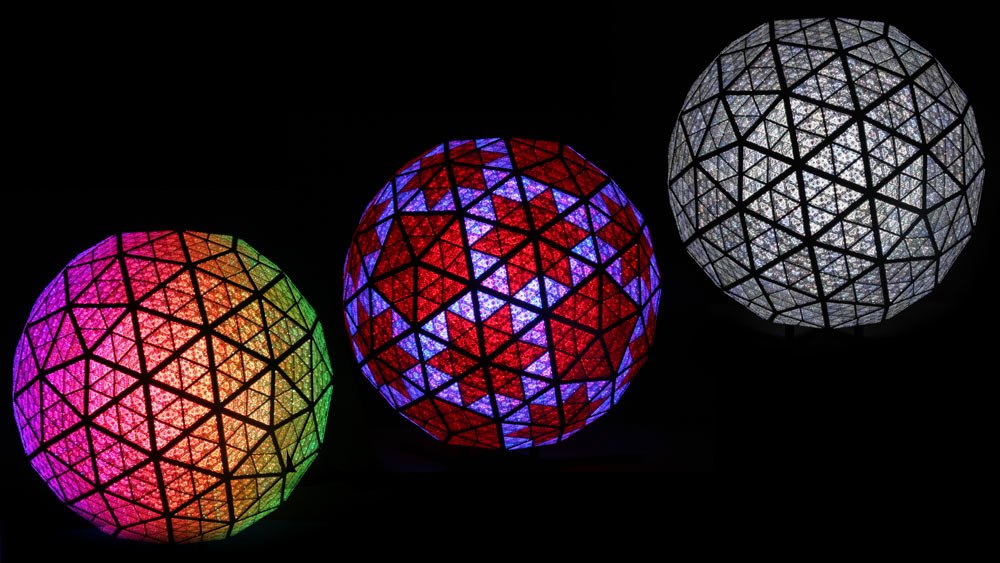By Caryn Turrel, NEED Curriculum and Program Associate
In the Turrel house, if someone goes to bed a little earlier than usual on a regular day, the standard line is, “But you promised to stay up and watch the ball drop with me!” When the kids were younger, they would all object to this joke and say it wasn’t even New Year’s Eve yet. And then we would all laugh and say good night. So, really, will you promise to stay up and watch the ball drop with me?
What is it about that ball? Why are we so intrigued by it? It’s nearly impossible to take my eyes off of its glittering, flashing progression while we count down to midnight. The first ball, introduced in 1907, was made of iron and wood, weighed 700 pounds, and was covered with 100 light bulbs. The construction has changed to all iron, then aluminum with 180 light bulbs. The 1995 New Year’s Eve Ball had an aluminum skin, rhinestones, and computer controls. To usher in the new millennium, the ball was clad in crystal, and in 2007 the light bulbs were changed to energy-efficient LEDs.
Owned and maintained by the Times Square Alliance, the Ball has a total of 32,256 Philips Luxeon Rebel light-emitting diodes (LEDs) – 8,064 each of red, green, blue, and white. The LEDS are wired into 672 modules each containing 12 red, 12 blue, 12 green, and 12 white for a total of 48 LEDs on each module. The LED modules sit behind 2,688 Waterford Crystal triangles, which sparkle and gleam as the LEDS change colors. The LED modules are capable of producing more than 16 million colors in dozens and dozens of vibrant, dazzling patterns.
In proper Tonight Show Starring Jimmy Fallon fashion, we want to give you the Pros and Cons of the New Year’s Eve Ball.
| Pro | Con |
| The Ball was given energy-efficient LEDS in 2007 |
Nobody can tell the joke, “How many ____ does it take to change a light bulb on the New Year’s Eve Ball?” anymore.
|
| The Ball contains 2,688 Waterford Crystal triangles and has sparkled over Times Square year-round since 2008. |
So many pigeons, so little window cleaner.
|
| The Ball is capable of producing 16 million different colors. |
Somewhere, a physics teacher is devising a lab for measuring each individual color.
|
| Each LED module has 12 red, 12 blue, 12 green, and 12 white LEDs. |
Art teachers must once again explain the difference between mixing pigments and mixing light to obtain different colors. Thanks a lot, science!
|
| The Ball is 12 feet (3.66 m) in diameter and weighs 11,875 pounds (5386.4 kg). It descends 43 meters in 60 seconds. |
Using the Ball in Station One of Science of Energy is nearly impossible, but we can still calculate its potential and kinetic energy as it falls.
|
There are lots of really interesting facts surrounding the entire New Year’s Eve celebration planned for 2016 in Times Square. For example, some of the confetti dropped contains wishes sent in by people from around the world. You can submit your wish, too! At NEED, we love not just the twinkling energy-efficient lights, but also the way we come together to celebrate a new year.
Whatever you’re doing, wherever you happen to be as we roll into another new year, all of us here at NEED hope you and those most special to you have a happy, healthy, prosperous new year. Without you, NEED just wouldn’t have the energy we require. Thank you, and we hope to see you in 2016!
